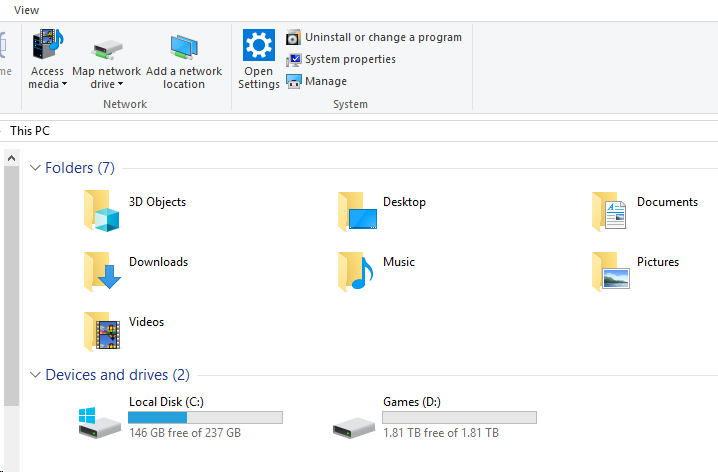You needed more storage space and so you've just installed a new secondary drive in your computer. But when you open file explorer, it's not there! Brand new drives that have never been installed in a computer before usually need to be initialized and formatted before you can save or install things on it. Fortunately, getting your new drive ready to use is quick and easy, just follow these steps:
1. First, Right-click on the Start button, typically found at the bottom of the screen, then click on Disk Management.

2. On the bottom half of the disk management window, locate what will be shown as an unknown disk or "Unallocated Space". Right-click the “Unknown Disk”/Unallocated Space and select Initialize Disk.

3. Select the partition style. GPT is preferred for newer drives or drives larger than 2TB in size, then click Ok.
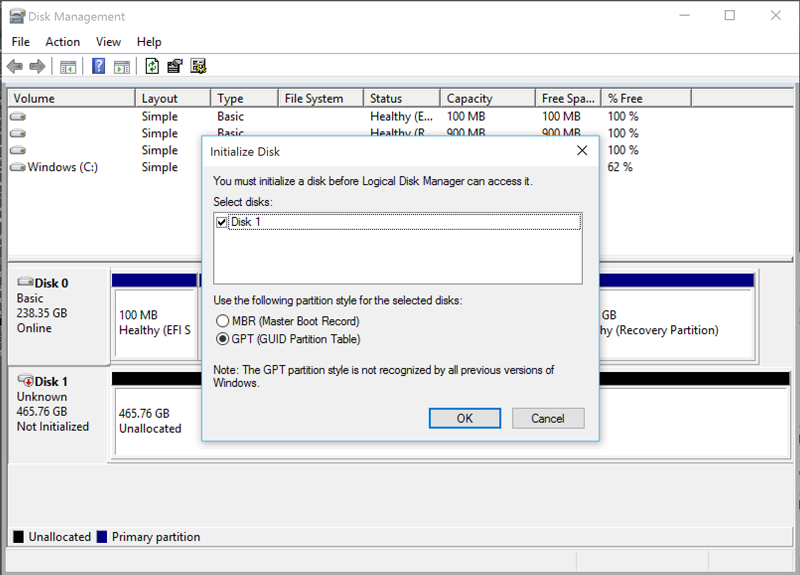
4. Right-click the Unallocated Space and select the New Simple Volume option.
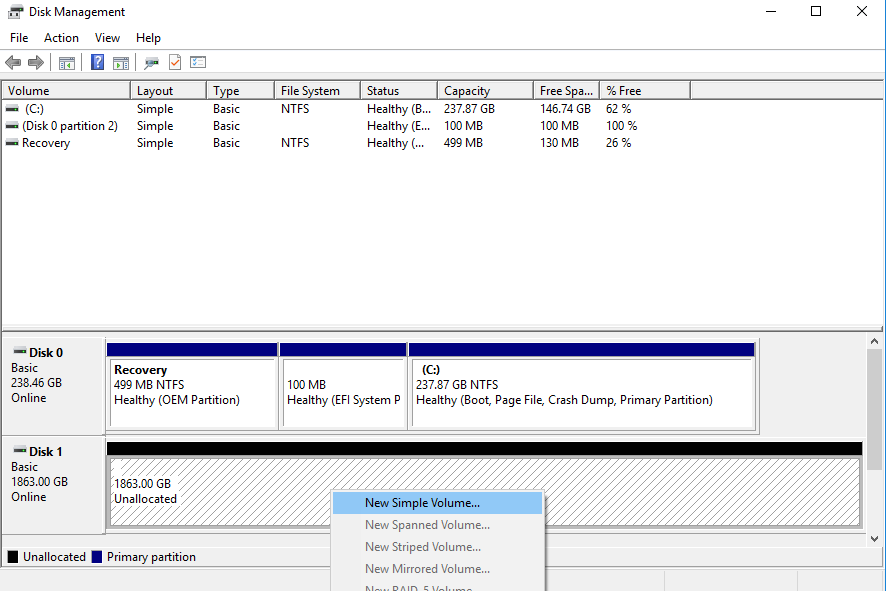
5. Click the Next button on the New Simple Volume Wizard pop-up window.
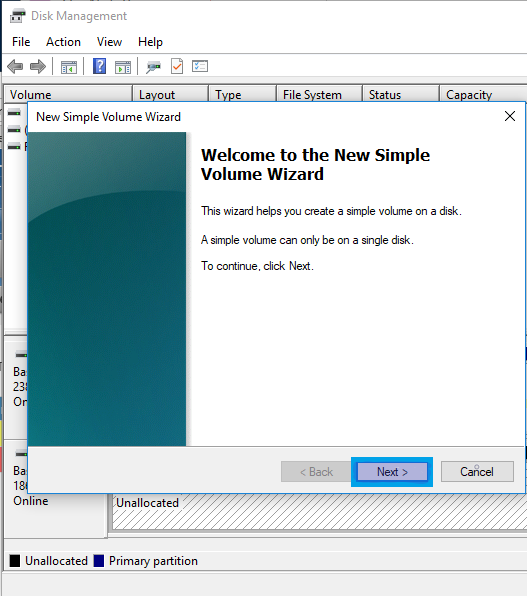
6. You will be asked to Specify Volume Size. The default value is the maximum size and will format the entire disk as 1 partition. If you want to create multiple smaller partitions, change the Simple volume size in MB value. Then select Next.
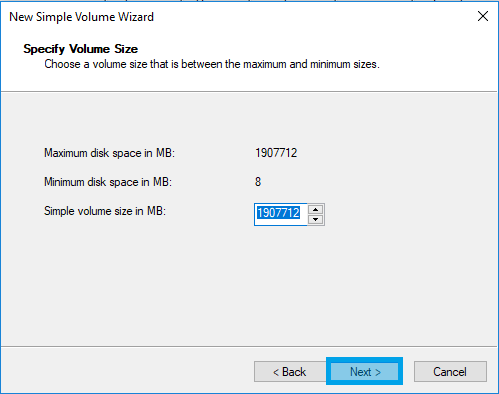
7. Use the Assign the following drive letter drop-down menu to select a letter for the new hard drive (you may choose any available letter) or leave the default letter assigned by Windows and click Next.

8. Select NTFS under the File system drop-down menu

9. Select the Default option under the Allocation unit size drop-down menu

10. In the Volume label field, type a descriptive name for the drive, or you may leave it as the default option for the drive.

11. Check the Perform a quick format option.

12. Unless necessary, do NOT check the Enable file and folder compression option.
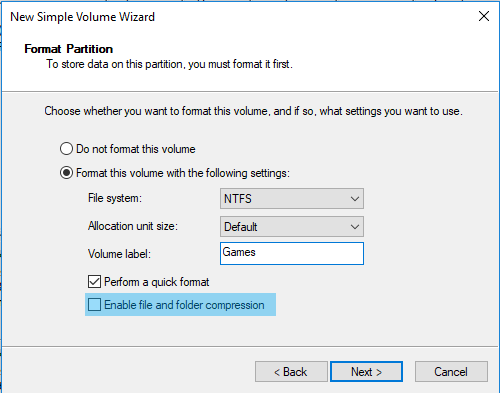
13. Click the Next button and then Finish on the next screen to complete this process.

14. Your disk is now ready to use! You can view it in File Explorer and in Disk Management now:
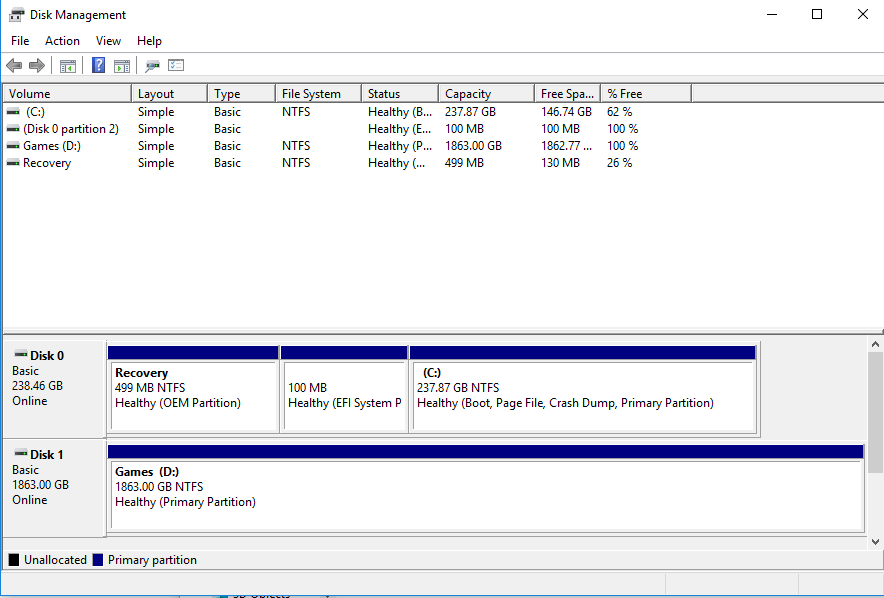
Example of File Explorer
